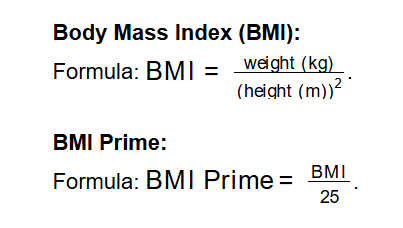 Home
Home
 Back
Back

Definition: This calculator computes the Body Mass Index (BMI) and BMI Prime for children, using their weight and height. BMI measures body fat, and BMI Prime compares it to a standard value.
Purpose: It helps assess a child’s weight status relative to their height, providing a simple metric for monitoring growth and potential health risks, such as underweight or obesity.
The calculator takes weight and height with selectable units and computes:
Unit Conversions:
Steps:
Calculating BMI and BMI Prime for children is useful for:
Examples:
Q: What does BMI indicate for kids?
A: BMI indicates a child’s weight status relative to their height. It’s used to assess whether a child is underweight, normal, overweight, or obese, though interpretation often requires age- and sex-specific percentiles.
Q: What does BMI Prime indicate?
A: BMI Prime compares a child’s BMI to 25, the upper limit of normal weight for adults. A value of 1 means the BMI is 25; below 1 suggests a lower BMI, and above 1 suggests a higher BMI.
Q: Why isn’t BMI classification provided for kids?
A: BMI classification for children requires age- and sex-specific percentiles to account for growth patterns, which vary widely. This calculator provides BMI and BMI Prime as a starting point; consult a pediatrician for a full assessment.